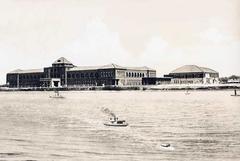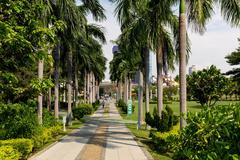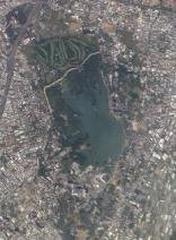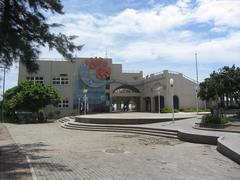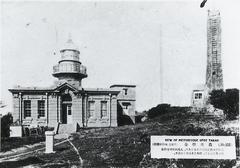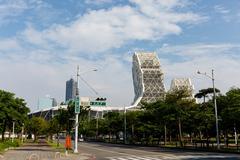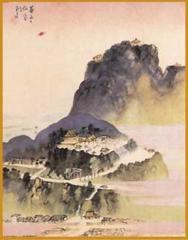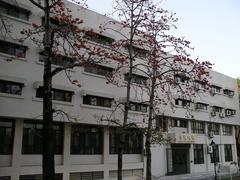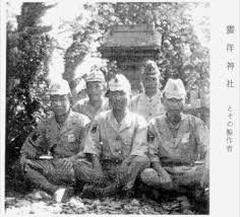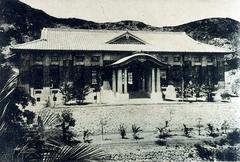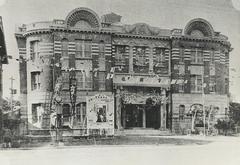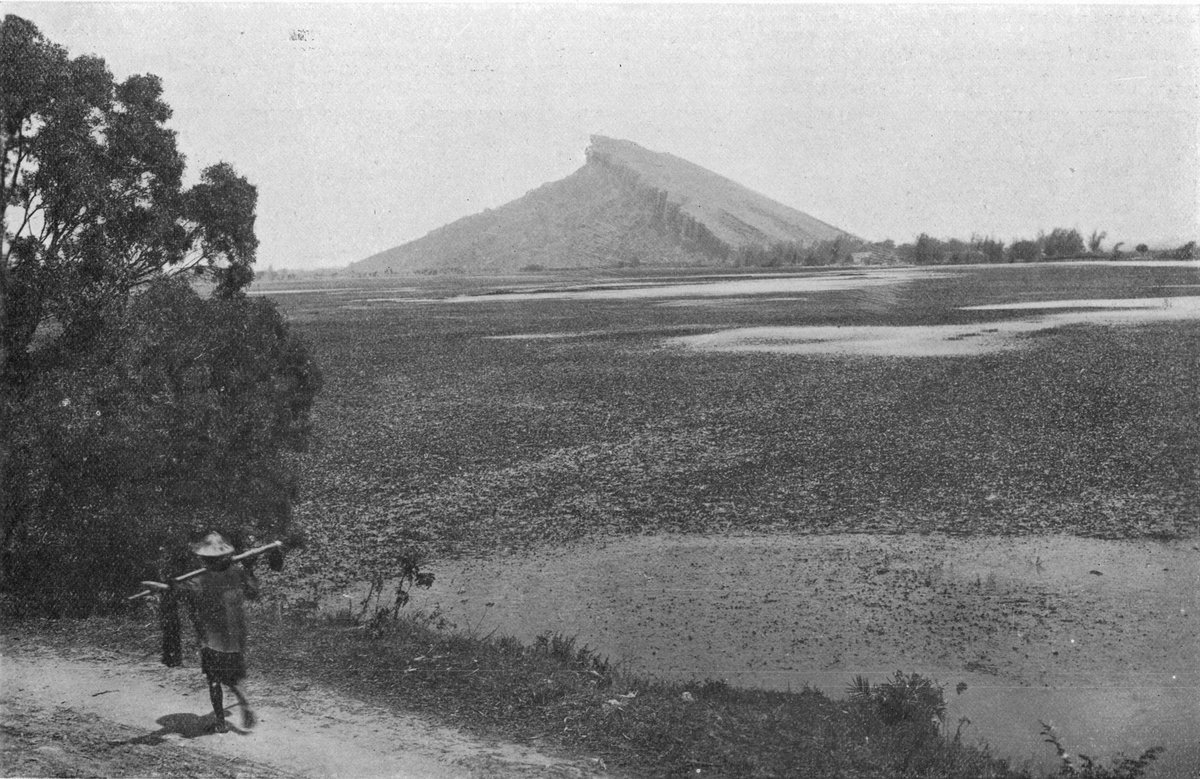
Visiting 北極亭 in Kaohsiung: Hours, Tickets, and Tips
Published Date: 31/07/2024
Introduction to 北極亭
Nestled in the vibrant city of Kaohsiung, Taiwan, 北極亭 (Beiji Pavilion) stands as a testament to the rich cultural and religious heritage of the region. Known as the North Pole Pavilion, this landmark is dedicated to Xuantian Shangdi, the Dark Heavenly Emperor revered in Taoism. Established during the Qing Dynasty, 北極亭 has evolved into a significant attraction, drawing visitors from across the globe to witness its historical and architectural grandeur (Shaozhi On The Net). This guide aims to provide a comprehensive overview of everything you need to know about visiting 北極亭, including its history, significance, visitor tips, and nearby attractions.
Contents Overview
- Historical Background of 北極亭
- Architectural Significance
- Cultural Importance
- Visitor Experience
- Special Events
- Nearby Attractions
- Practical Information
- Tips for a Memorable Visit
- FAQ
- Conclusion
- Sources
Historical Background of 北極亭
北極亭, also known as the North Pole Pavilion, is a significant historical and cultural landmark in Kaohsiung, Taiwan. This pavilion is dedicated to the worship of Xuantian Shangdi, also known as the Dark Heavenly Emperor, a deity revered in Taoism. The origins of 北極亭 date back to the Qing Dynasty, reflecting the deep-rooted religious and cultural traditions of the region. Despite its relatively recent construction, starting in 1991 and completed in 1995, the pavilion has quickly become a landmark in the Lotus Pond area, a region known for its rich cultural and historical heritage.
Architectural Significance
The architecture of 北極亭 is a testament to traditional Chinese design, featuring intricate carvings, vibrant colors, and symbolic motifs. The pavilion’s structure includes a main hall, side halls, and a courtyard, all adorned with detailed artwork depicting Taoist deities and mythological scenes. The roof is particularly notable for its ornate dragon and phoenix sculptures, which symbolize power and prosperity. Additionally, the pavilion is accessible via a long bridge adorned with statues of various deities, creating a visually stunning approach that enhances the spiritual experience for visitors (Hoponworld).
Cultural Importance
北極亭 serves as a focal point for local religious activities and festivals. It is especially significant during the annual birthday celebrations of Xuantian Shangdi, which attract devotees from across Taiwan. These celebrations include elaborate rituals, traditional music, and processions, providing a glimpse into the rich cultural heritage of Kaohsiung. The presence of the 72-meter-tall statue of the Xuantian God, one of the tallest statues on water in Asia, underscores the pavilion’s importance as a place of worship and pilgrimage (Hoponworld).
Visitor Experience
Accessibility
北極亭 is conveniently located in the heart of Kaohsiung, making it easily accessible by public transportation. Visitors can take the Kaohsiung MRT to the Formosa Boulevard Station and then transfer to a local bus or taxi to reach the pavilion. The site is also accessible by bicycle, with several rental stations available throughout the city (Shaozhi On The Net).
Guided Tours
For those interested in a deeper understanding of 北極亭’s history and significance, guided tours are available. These tours are conducted by knowledgeable local guides who provide insights into the pavilion’s architectural features, religious practices, and historical context. Booking a guided tour in advance is recommended, especially during peak tourist seasons (Hoponworld).
Photography Tips
北極亭 offers numerous opportunities for photography enthusiasts. The vibrant colors and intricate details of the pavilion’s architecture make for stunning photographs. Visitors are encouraged to capture the beauty of the dragon and phoenix sculptures on the roof, the detailed carvings on the walls, and the serene atmosphere of the courtyard. Early morning or late afternoon visits are ideal for capturing the best light (Shaozhi On The Net).
Special Events
北極亭 hosts various special events throughout the year, including traditional festivals and religious ceremonies. One of the most notable events is the annual birthday celebration of Xuantian Shangdi, featuring elaborate rituals, processions, and cultural performances. Visitors can experience these events to gain a deeper understanding of the local traditions and cultural significance.
Nearby Attractions
Lotus Pond
Located just a short distance from 北極亭, Lotus Pond is another must-visit attraction in Kaohsiung. This man-made lake is surrounded by temples and pagodas, including the famous Dragon and Tiger Pagodas. Visitors can enjoy a leisurely stroll along the pond’s shores, taking in the picturesque views and exploring the various religious sites (Get Me to Taiwan).
Pier-2 Art Center
For those interested in contemporary art, the Pier-2 Art Center is a vibrant cultural hub located near 北極亭. Once an abandoned warehouse district, Pier-2 has been transformed into a space for art galleries, exhibitions, and interactive installations. The center also features an outdoor sculpture park and colorful murals, making it a popular destination for art enthusiasts (Hoponworld).
Practical Information
Visiting Hours
北極亭 is open to visitors daily from 8:00 AM to 6:00 PM. It is advisable to check the pavilion’s official website or contact the local tourism office for any changes in opening hours, especially during public holidays and special events.
Tickets and Admission Fees
There is no admission fee to visit 北極亭, making it an affordable destination for travelers. However, donations are welcome and help support the maintenance and preservation of the pavilion.
Visitor Etiquette
When visiting 北極亭, it is important to observe proper etiquette. Visitors should dress modestly, refrain from making loud noises, and avoid touching the religious artifacts. Photography is generally allowed, but it is courteous to ask for permission before taking pictures of worshippers or during religious ceremonies.
Tips for a Memorable Visit
- Plan Ahead: To make the most of your visit, plan your itinerary in advance. Consider combining your visit to 北極亭 with nearby attractions such as Lotus Pond and the Pier-2 Art Center.
- Stay Hydrated: Kaohsiung can be quite hot and humid, especially during the summer months. Carry a water bottle and stay hydrated throughout your visit.
- Respect Local Customs: Show respect for local customs and traditions by following the guidelines for visitor etiquette. This will enhance your experience and ensure a positive interaction with the local community.
- Capture the Moment: Bring a camera or smartphone to capture the beauty of 北極亭 and its surroundings. Early morning and late afternoon are the best times for photography due to the soft lighting.
- Engage with Locals: Take the opportunity to engage with local residents and learn more about the cultural significance of 北極亭. This can provide valuable insights and enrich your overall experience.
FAQ
Q1: What are the visiting hours for 北極亭?
A1: 北極亭 is open daily from 8:00 AM to 6:00 PM.
Q2: Is there an admission fee for 北極亭?
A2: No, there is no admission fee, but donations are welcome.
Q3: How do I get to 北極亭?
A3: You can reach 北極亭 by taking the Kaohsiung MRT to the Formosa Boulevard Station and then transferring to a local bus or taxi.
Conclusion
Visiting 北極亭 in Kaohsiung offers a unique opportunity to explore Taiwan’s rich cultural and religious heritage. With its historical significance, stunning architecture, and vibrant cultural activities, 北極亭 is a must-visit destination for travelers seeking an immersive and memorable experience in Kaohsiung. By following the practical tips and guidelines provided in this guide, visitors can make the most of their visit and gain a deeper appreciation for this remarkable cultural landmark.

